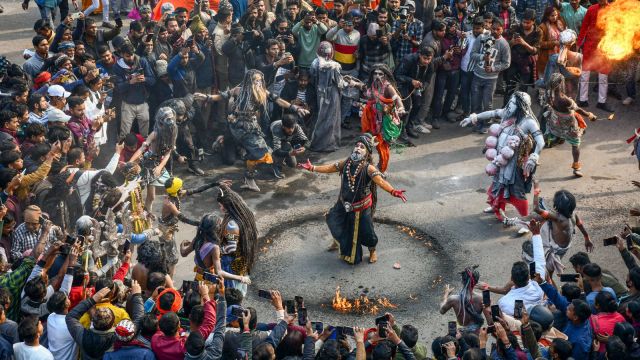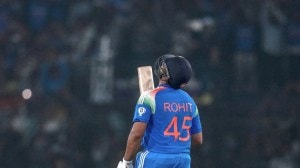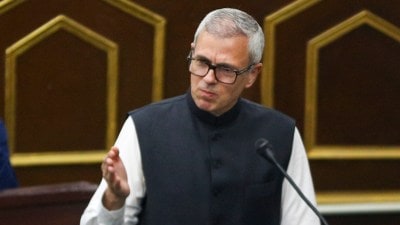Mythology-themed gates, murals & sculptures to greet visitors at Kumbh
The 45-day event will culminate on February 26.
 Two more special trains will start from Amritsar for Phaphamau on January 19 and February 6. (File Photo)
Two more special trains will start from Amritsar for Phaphamau on January 19 and February 6. (File Photo)Four specially designed large gates themed on the revered rivers Ganga, Yamuna and Saraswati and Lord Shiva, and other structures and sculptures themed on mythological
symbols will greet the visitors at the Maha Kumbh starting January 13.
The Uttar Pradesh government has spent funds worth crores, including `14.5 crore on the four gates, and `1.5 crore each on sculptures themed after Nataraj, damroo (small two-headed drum of Lord Shiva) and Garuda (eagle-like bird who helped Lord Rama and his brother Lakshmana during their exile), to make the mela venue an immersive experience in “sanatan culture”.
The 45-day event will culminate on February 26.
The four gates built with glass-fiber reinforced concrete (GFRC) have been designed by film director and artist Omung Kumar and might last beyond the next Maha Kumbh, officials said. While the gates developed on the theme of the Ganga, Yamuna and Saraswati rivers have been completed and inaugurated by Chief Minister Yogi Adityanath during his visit to the Maha Kumbh venue, the fourth gate built on the theme of Lord Shiva is under construction, it is learnt.

“These gates are not merely physical entry points to the city but they represent an intersection of spirituality, geography and cultural identity,” said an official.
Those arriving from Lucknow and Ayodhya will enter the city from the ‘Ganga Dwar’ with a mural of Goddess Ganga over it. The gate, officials said, will be the “spiritual gateway” to the city as the river symbolises “purity and redemption”. Those arriving from the Varanasi side will enter the city through the “Yamuna Duar, The Entrance of Devotion and Sustenance”.
Also, those arriving from Chitrakoot and Rewa will enter Prayagraj through Saraswati Dwar, referred to as the “Entrance of Wisdom and Knowledge”.
The fourth gate, “Neelkanth Dwar”, being built on the theme of Lord Shiva, is coming up on Mirzapur road.
These gates are about 15-20 km from the focal Sangam point. The murals have been developed as per the mythology. For instance, the goddess Ganga is seen riding a crocodile, Yamuna a tortoise. The goddess Saraswati is seen seated on a lotus flower while Lord Shiva is sitting next to Nandi (bull).
Also, a bronze sculpture of Maratha queen Ahilya Bai Holkar has been made.
Each of these bronze sculptures is worth `1.3 to 1.5 crore, said officials. Meanwhile, eighty-five sub-stations have been installed to illuminate the Maha Kumbh area spread over more than 4,000 hectares, officials said.
The officials concerned have estimated the electricity consumption during the 45-day event at `30 crore. Nearly 2 lakh units of electricity will be consumed daily, they added.
As many as 52,000 electric poles, 70,000 LED lights and 2,016 solar hybrid lights have been installed in the area. The solar hybrid lights, placed along the main roads, are programmed to automatically turn on in the evening and off in morning.
Besides illuminating the common area, the department will also provide lighting to makeshift residential set-ups and shops at the mela site.
Around 1.6 lakh tents and 50,000 shops will come up for the event, said an official.
“According to our estimate, electricity worth around Rs 30 crore will be consumed during the mega event,” said Maha Kumbh Superintendent Engineer Manoj Gupta. To ensure an uninterrupted power supply, more than 5000 personnel, including executive engineers, sub-divisional officers, and junior engineers, from the electricity department and additional ad hoc staff have been deployed.







